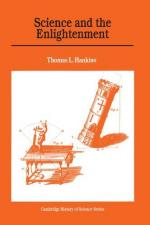
|
| Name: _________________________ | Period: ___________________ |
This test consists of 15 multiple choice questions and 5 short answer questions.
Multiple Choice Questions
1. What was the name of the philosopher who could enthusiastically claim that "the works of Nature everywhere sufficiently evidence a Diety"?
(a) D' Alembert.
(b) Kant.
(c) Aristotle.
(d) John Locke.
2. All of the following philosophers at the University of Leiden followed Newton's lead in organizing experiments except for whom?
(a) Boerhaave.
(b) 'sGravesande.
(c) Musschenbroek.
(d) Locke.
3. What was the name of the curve traced by the end of a string as it is unwrapped from another curve found in Chapter 2?
(a) Cycloid.
(b) Isoperimeters.
(c) Tractrix.
(d) Involute.
4. What area of science included astronomy, optics, statics, hydraulics, gnomonics, geography, horology, navigation, surveying, and fortification?
(a) Meteorology.
(b) Botany.
(c) Mixed mathematics.
(d) Geology.
5. What was the name of the revolution that was a cultural event associated with Galileo Galilei, Johannes Kepler, Rene Descartes, and Isaac Newton?
(a) Enlightenment Revolution.
(b) French Revolution.
(c) Scientific Revolution.
(d) American Revolution.
6. Who carried rational mechanics to the highest point of generality and abstraction that it was to reach during the Enlightenment?
(a) Diderot.
(b) Daniel.
(c) Lagrange.
(d) Hermann.
7. According to Chapter 2, for Newton, ________ consisted in "making experiments and observations and in drawing general Conclusion from them by Induction."
(a) Calculus.
(b) Religion.
(c) Analysis.
(d) Reason.
8. Who stated in the introduction to their book that, "There are no figures in this book. The methods that I demonstrate here require neither constructions, nor geometrical or mechanical reasoning, but only algebraic operations, subject to a regular and uniform development"?
(a) Lagrange.
(b) Basel.
(c) Euler.
(d) Hermann.
9. What area of study in the Middle Ages had been the domain of those truths that could be found through the use of reason alone without the revelation of the Bible?
(a) Natural theology.
(b) Mied mathematics.
(c) Physiology.
(d) Psychology.
10. Vis viva was thought by its creator ________ to be the dynamic quantity that was conserved in the universe, according to the narrator in Chapter 2.
(a) 'sGravesande.
(b) Euler.
(c) Leibniz.
(d) Descartes.
11. In Chapter 3, who proposed a single static electrical "atmosphere" that attracted and repelled by pressure rather than by the impact of an electrical wind?
(a) Franklin.
(b) Newton.
(c) Desagulier.
(d) Musschenbroek.
12. Some of the "cabinet de physique" became very large, the most famous being the collection of the ________ in Haarlem.
(a) Rockefeller Foundation.
(b) Teyler Foundation.
(c) Ford Foundation.
(d) Robert Wood Johnson Foundation.
13. Of all the subtle fluids conceived of during the Enlightenment, the ________ was the one that caused the most excitement and attracted the most researchers.
(a) Water.
(b) Natural fire.
(c) Electrical fire.
(d) Air.
14. From ________'s law of falling bodies, it was known that the heights would be proportional to the squares of the velocities at impact.
(a) Galileo.
(b) Voltaire.
(c) Descartes.
(d) Poleni.
15. In Chapter 2, who was the greatest analyst of the Enlightenment and created mathematical theories to predict the buckling of columns and beams?
(a) Leibniz.
(b) Bernoulli.
(c) Leonhard Euler.
(d) Newton.
Short Answer Questions
1. Chapter 2 reveals that Leibniz wrote the "second difference" in calculus as ________.
2. In Chapter 3, whose book described demonstration experiments and gave detailed instructions for making and using the apparatus, but unlike the Dutch physicists, he attempted to create a single rational systematic philosophy, after the model of Leibniz?
3. In Chapter 1, who claimed that his "principle of least action" proved the existence of God?
4. According to the narrator in Chapter 1, what was the key to a correct method whose model was mathematics?
5. According to Chapter 3, ________ was the most volatile and least substantial of all the elements; therefore, it was the chief agent of change, as witnessed by its role in combustion, fermentation, decomposition, and evaporation.
|
This section contains 568 words (approx. 2 pages at 300 words per page) |

|




